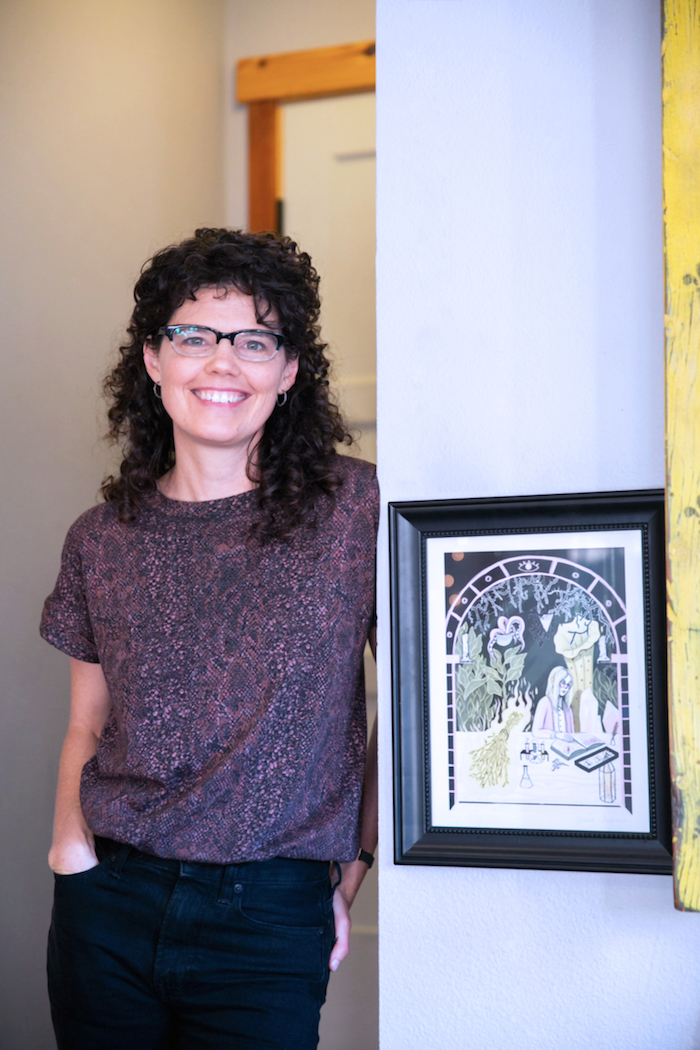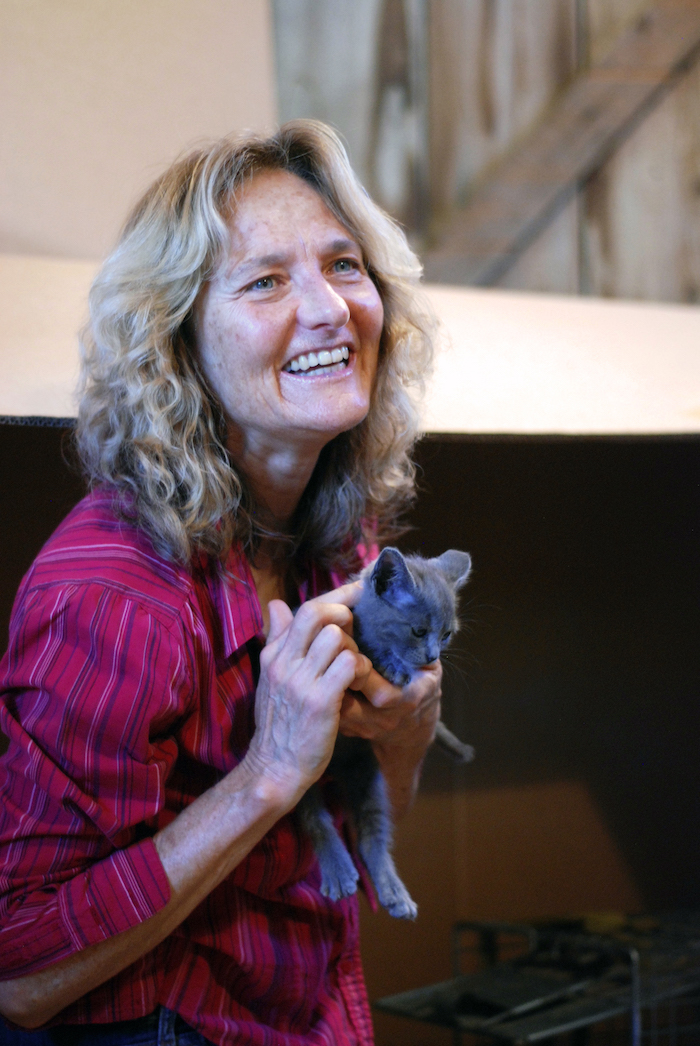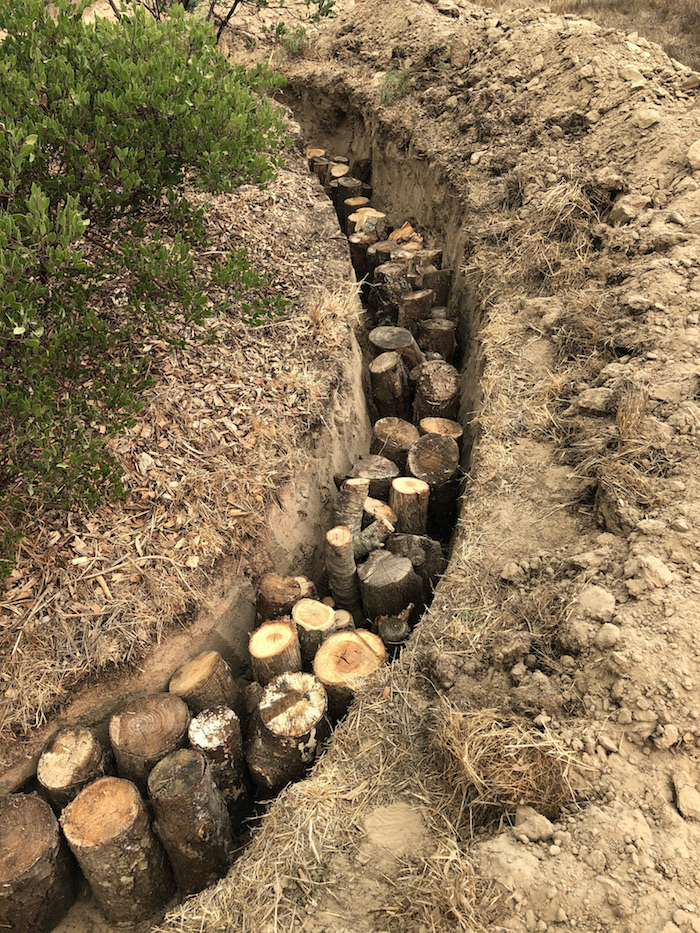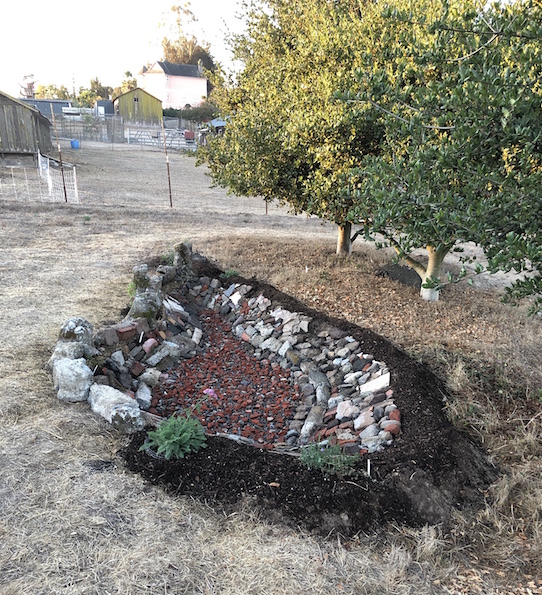How our daily choices can make a big impact.
When Trathen Heckman was 31, he started printing a zine called Ripples, about the effects wrought by small acts of change. He’d already made a huge pivot in his own life a few years before, leaving a Fortune  500 consulting firm to travel, snow-board, and make discoveries—like the transformation of a lawn into a “food forest” as part of a permaculture course. This was after 9/11, and his heart was broken—by the unexpected loss of his mother to cancer that fall, the devastation of the impending Iraq War, the sadness of a world in which people had become alienated from nature. So in 2002 he launched the nonprofit Daily Acts, devoted to demystifying the daunting challenge of systemic change by helping people to see the power of their small, daily choices.
500 consulting firm to travel, snow-board, and make discoveries—like the transformation of a lawn into a “food forest” as part of a permaculture course. This was after 9/11, and his heart was broken—by the unexpected loss of his mother to cancer that fall, the devastation of the impending Iraq War, the sadness of a world in which people had become alienated from nature. So in 2002 he launched the nonprofit Daily Acts, devoted to demystifying the daunting challenge of systemic change by helping people to see the power of their small, daily choices.
It’s not hard to understand why Daily Acts won the Bohemian’s Best Nonprofit last year. In addition to their less-quantifiable work on climate policy (they co-founded Climate Action Petaluma, which helped the city become the first in the county to declare a climate emergency and create a climate commission), their website keeps a running tally of their impact: they’ve educated over 70,200 people, run almost 1,500 different programs, and planted 37 demonstration gardens. When the pandemic hit last year, Daily Acts collaborated to provide 1,000 apartment-friendly food garden kits to Sonoma County residents.
“In a world of overwhelming large problems, the power of small is bigger than you think,” says Heckman, whose optimism is infectious. “It’s small daily acts of courage and conviction, small groups of unstoppable change makers, small gardens that harvest the rain, grow food, and sequester atmospheric inspiration and carbon out of strangers and thin air.
“Each yard is its own micro-watershed,” Heckman enthuses, showing me around the food forest that surrounds his yellow house in Petaluma where he grows chocolate persimmons, lemons, satsumas, strawberry guava, tangerines, almonds, apples, nectarines, garlic, artichokes, blueberries, the list goes on. As he points out the plum trees he’s grafted into a simple arch, or explains how the family’s bathwater is reused to water the black mulberry, I am struck by both the simplicity and the common sense of creating a small water cycle, of rehydrating one’s land.
“People may not understand how catastrophic this drought is,” says “fluid druid” Brock Dolman, co-director of the Water Institute at Occidental Arts and Ecology Center. “The average rainfall in West County is 60 inches, and we are currently at 20 inches. I want to support people in learning about conservation hydrology. As water consumers, how can we use less water and improve our water usage? How can we improve the resiliency of our system?”
In answer to these questions, Made Local brings you three examples of relatively accessible “daily acts” in our community, which can be implemented by homeowners and renters alike. As Heckman points out, “Water is the largest greenhouse gas and significantly influences our climate. Yet it’s not a big part of the climate conversation. You can change that.”
The Act of…Using Laundry-to-Landscape Greywater with Amy Charnay
 Amy pulls from her extensive background in environmental science, herbal medicine and permaculture to work with the land to cultivate a low water use garden featuring native, aromatic and medicinal and food plants. Amy utilizes plants from her garden in downtown Santa Rosa to create a variety of herbal products for her brand Herban Allies.
Amy pulls from her extensive background in environmental science, herbal medicine and permaculture to work with the land to cultivate a low water use garden featuring native, aromatic and medicinal and food plants. Amy utilizes plants from her garden in downtown Santa Rosa to create a variety of herbal products for her brand Herban Allies.
Briefly explain the process
Our system was installed as part of a workshop via Daily Acts. We wash our laundry in our washing machine and direct the flow into a bed of fruit trees. There is a lever to direct either to sewer or landscape—it’s very simple.
Why do it?
To reduce our water use and put our greywater to good use (in our case to feed fruit trees instead of routing to the sewer).
One surprising thing you’ve learned?
Many natural laundry detergents are not good for the garden as they contain salts.
One common myth you’d like to dispel?
Greywater laundry-to-landscape systems are very user friendly and not difficult to manage for the average person. They are very easy for someone with basic plumbing and landscaping skills to install.
One challenge or mishap you overcame?
Being mindful not to run very hot water into the landscape or using laundry detergent that is not appropriate for laundry to landscape. We have the habit of leaving the valve set to the sewer so that we minimize the risk of routing problematic water to our trees.
The Act Of…Regenerative Planting With Terry Church
 Terry Church is a horse trainer, carbon farmer, regenerative land steward, co-manager of Neighbor Gate Grazing Project, and writer. She volunteers for Daily Acts by facilitating an annual Sustainable Equine Management Workshop.
Terry Church is a horse trainer, carbon farmer, regenerative land steward, co-manager of Neighbor Gate Grazing Project, and writer. She volunteers for Daily Acts by facilitating an annual Sustainable Equine Management Workshop.
Briefly explain the process
Through Daily Acts, I was exposed to the tools, knowledge, and skills needed to steward the six-plus  acres of land that I rent in west Petaluma.
acres of land that I rent in west Petaluma.
I began by gathering acorns and digging holes to plant a row of them to take the place of the dying and non-native Monterey pines that had once created a wind break in the back pasture. Then I dug more holes for more trees and shrubs that I had received cuttings of from friends’ trees. Little by little, over the years, I built bird baths from scratch and nailed up bird houses, mason bee houses, butterfly houses and bat houses. I dug swales using a simple hand shovel to capture water, then reseeded native grasses in every patch where I had disturbed the soil. I dug a seasonal pond, a hügelkultur, and tree rings, all to capture water to supplement and sometimes replace drip irrigation I had previously installed.
Why do it?
 One-half inch of rain falling on a 1,000-square-foot roof will yield 300 gallons of water. Our barn roof measures about 690 square feet on the side that runs down to the eave gutter. Even with a low rainfall year of about eight inches, that means that we infiltrated 286.5 gallons per 1/2 inch of rainfall, or 4,584 gallons of water for the season. In a “normal” season of 25-30 inches of rain, that would mean we would usually infiltrate 14,325 gallons of rainwater.
One-half inch of rain falling on a 1,000-square-foot roof will yield 300 gallons of water. Our barn roof measures about 690 square feet on the side that runs down to the eave gutter. Even with a low rainfall year of about eight inches, that means that we infiltrated 286.5 gallons per 1/2 inch of rainfall, or 4,584 gallons of water for the season. In a “normal” season of 25-30 inches of rain, that would mean we would usually infiltrate 14,325 gallons of rainwater.
One surprising thing you’ve learned?
How much I can do with just my own hands and a shovel. The key is patience and starting from wherever you are. When I began, I didn’t have the stamina or muscle to last for long. So I learned to do what I could, when I could, and to not let that stop me.
One common myth you’d like to dispel?
The negativity surrounding government agencies. The Resource Conservation District (RCD) and the USDA’s Natural Resources Conservation Service (NRCS) exist in every state across the U.S. since the Dustbowl crisis of the 1930s. They strategically and financially support farmers and ranchers in implementing best land management practices. Many might object to the idea of government intervention, but both of these agencies are non-regulatory, which means they cannot fine or cite you for infractions of any kind. They are there to offer free consulting on issues regarding your land operations. Sonoma County is blessed with three offices: Sonoma RCD in Santa Rosa. Goldridge RCD in Sebastopol, and the NRCS office in Petaluma.
One challenge or mishap you overcame?
My initial challenge was my perception that I had no time and no money to do anything that could make a real difference. What ensued was a sense of inertia and despair. Then seven or eight years ago, it occurred to me that I’d have to think more creatively about how to create changes without any of the things I thought I needed. What I did have, I then realized, was my body, my passion and a shovel. And basically, that’s what I used to begin.
Have I had other challenges along the way? Of course: plants dying, nutrition-less and hydrophobic soil making trees disease-prone, gophers eating trees, bugs eating blossoms, aphids eating leaves, deer and wildlife eating fruit, too much sun, not enough sun, and on and on. The easy “fixes” of spraying chemicals, using traps and shooting wildlife were never an option. But once my initial inertia had been dissolved through action, challenges that constantly arise become one more thing to overcome through learning—and then to feel better for having learned them.
The Act Of…Harvesting Rainwater With Jesse Savou
 Jesse graduated from Stanford and earned her master’s in Ecological Design at the Conway School. After building her first rain catchment system as an AmeriCorps project, she launched BlueBarrel in 2012. Jesse and her husband welcomed a son in 2014 and have been balancing work and play ever since!
Jesse graduated from Stanford and earned her master’s in Ecological Design at the Conway School. After building her first rain catchment system as an AmeriCorps project, she launched BlueBarrel in 2012. Jesse and her husband welcomed a son in 2014 and have been balancing work and play ever since!
Briefly explain the process.
Rain barrels allow you to collect your roof-runoff for use in the garden (and other non-potable uses). Water that would otherwise be bound for the storm-drain gets diverted into barrels using a simple downspout diverter.
Why do it?
So many reasons! It’s good for the environment: helps conserve water, reduces storm-water impacts, and builds soils (if used in the garden). A full outline of environmental benefits can be found on our website. Other benefits include reducing water and sewer bills, emergency preparedness, a healthier garden (rainwater is the highest-quality water available for plants), and the great feeling of accomplishment that comes with sourcing water on-site and tuning into nature’s flows.
One surprising thing you’ve learned?
 Just how easy it is. BlueBarrel ran a customer survey a couple years ago and most folks said the installation was easier than they’d thought. People are also surprised by how quickly the barrels fill. A lot of them come back to add more barrels once they see the kind of flow that’s available.
Just how easy it is. BlueBarrel ran a customer survey a couple years ago and most folks said the installation was easier than they’d thought. People are also surprised by how quickly the barrels fill. A lot of them come back to add more barrels once they see the kind of flow that’s available.
One common myth you’d like to dispel?
Many Sonoma County residents believe that we don’t get enough rain in California to justify harvesting it. This couldn’t be further from the truth! In fact, a long dry season is a very good reason for storing water when it does rain. Historically, rainwater harvesting was the only way desert communities survived, before society developed energy-intensive methods for pumping and transporting water over long distances. So while rain barrels are re-emerging as an environmental trend, rainwater harvesting is not new. It’s an ancient technique learned from indigenous communities of the Southwest, and many others worldwide, because in fact, rainwater harvesting is a benefit in any climate.A single inch of rain falling on a 1,000-square-foot roof surface will generate more than 600 gallons of the highest-quality irrigation water. To put that in perspective, it’s enough to fill 11 55-gallon rain barrels. In my home in Santa Rosa, I have a string of eight barrels collecting from one downspout, seven from another, and three from another, and I could collect so much more.
One challenge or mishap you overcame?
It took a lot to figure out an optimized inlet/overflow solution in the beginning. Many DIY-ers have had the experience of researching and installing and then the first time it rains, the water shows you exactly what you did wrong. That’s when I realized the value that BlueBarrel could bring as a business. We tinkered and tinkered until we got it just right—so there’s no guesswork for our customers. Just a system that works.
